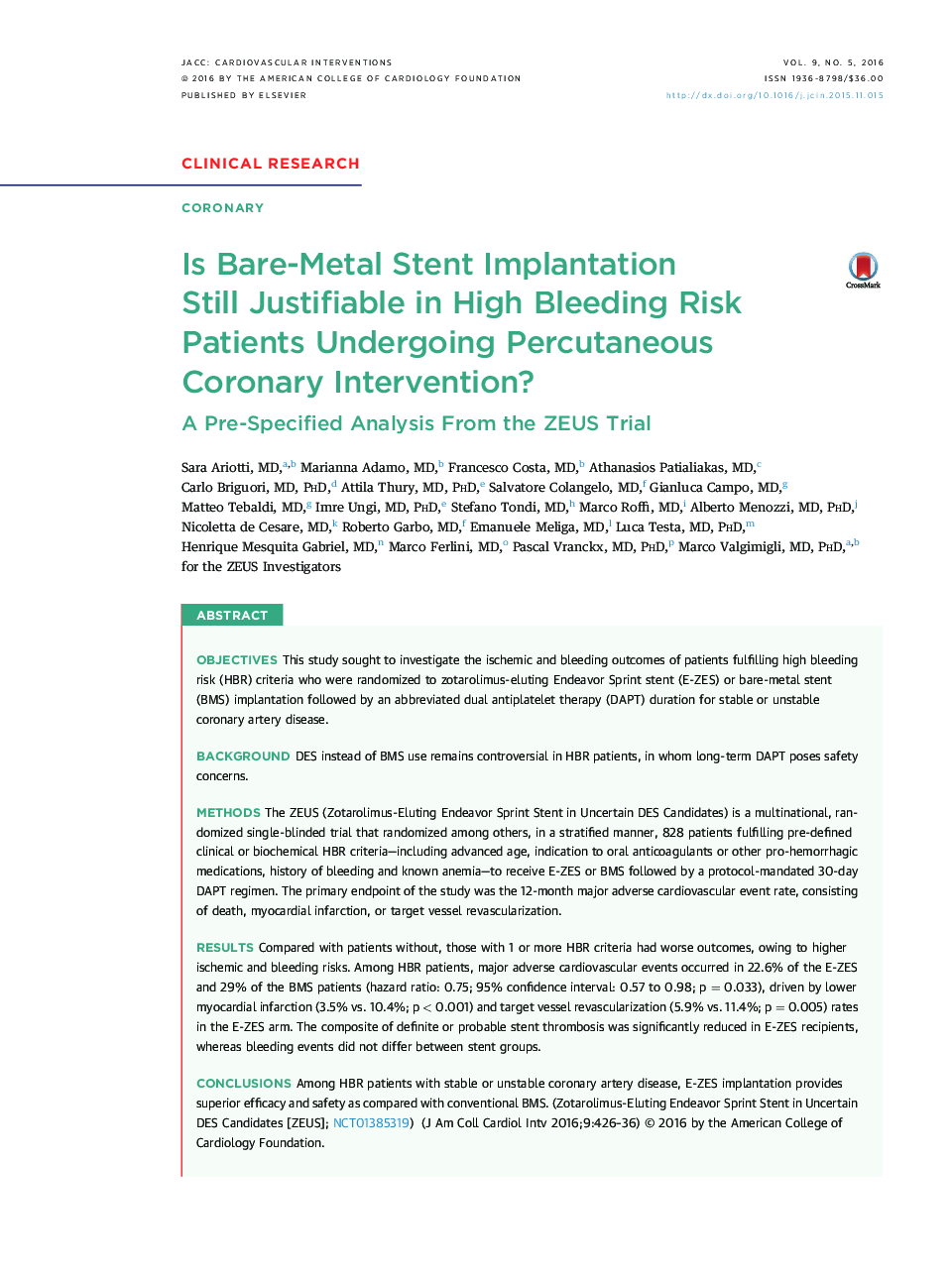| کد مقاله | کد نشریه | سال انتشار | مقاله انگلیسی | نسخه تمام متن |
|---|---|---|---|---|
| 2939594 | 1176994 | 2016 | 11 صفحه PDF | دانلود رایگان |

ObjectivesThis study sought to investigate the ischemic and bleeding outcomes of patients fulfilling high bleeding risk (HBR) criteria who were randomized to zotarolimus-eluting Endeavor Sprint stent (E-ZES) or bare-metal stent (BMS) implantation followed by an abbreviated dual antiplatelet therapy (DAPT) duration for stable or unstable coronary artery disease.BackgroundDES instead of BMS use remains controversial in HBR patients, in whom long-term DAPT poses safety concerns.MethodsThe ZEUS (Zotarolimus-Eluting Endeavor Sprint Stent in Uncertain DES Candidates) is a multinational, randomized single-blinded trial that randomized among others, in a stratified manner, 828 patients fulfilling pre-defined clinical or biochemical HBR criteria—including advanced age, indication to oral anticoagulants or other pro-hemorrhagic medications, history of bleeding and known anemia—to receive E-ZES or BMS followed by a protocol-mandated 30-day DAPT regimen. The primary endpoint of the study was the 12-month major adverse cardiovascular event rate, consisting of death, myocardial infarction, or target vessel revascularization.ResultsCompared with patients without, those with 1 or more HBR criteria had worse outcomes, owing to higher ischemic and bleeding risks. Among HBR patients, major adverse cardiovascular events occurred in 22.6% of the E-ZES and 29% of the BMS patients (hazard ratio: 0.75; 95% confidence interval: 0.57 to 0.98; p = 0.033), driven by lower myocardial infarction (3.5% vs. 10.4%; p < 0.001) and target vessel revascularization (5.9% vs. 11.4%; p = 0.005) rates in the E-ZES arm. The composite of definite or probable stent thrombosis was significantly reduced in E-ZES recipients, whereas bleeding events did not differ between stent groups.ConclusionsAmong HBR patients with stable or unstable coronary artery disease, E-ZES implantation provides superior efficacy and safety as compared with conventional BMS. (Zotarolimus-Eluting Endeavor Sprint Stent in Uncertain DES Candidates [ZEUS]; NCT01385319)
Journal: JACC: Cardiovascular Interventions - Volume 9, Issue 5, 14 March 2016, Pages 426–436